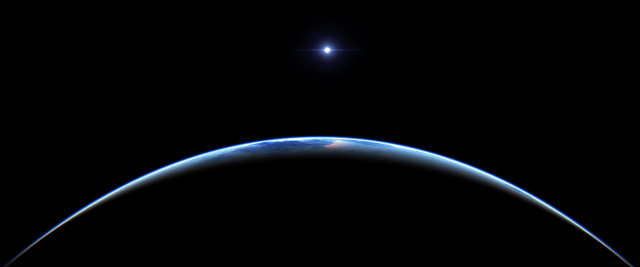Canada News
Toronto students become published scientists after sending worms to space

FILE: “I never would have thought in Grade 8 that I would be doing something so meaningful with science,” (Photo by K putt/Flickr, CC BY-NC 2.0)
TORONTO — Some researchers spend years working to conduct an experiment in space, but for a group of young Toronto scientists, all it took was a school project.
The four students were in grades 8 through 12 when they first proposed shooting a tube of microscopic worms into orbit so they could study the effects of low gravity on muscle deterioration.
Now, the young women are all published scientists — half before earning a high-school diploma — after their experiment’s unexpected findings were featured in the peer-reviewed academic journal “Gravitational Space Research” last week.
“I never would have thought in Grade 8 that I would be doing something so meaningful with science,” Annabel Gravely, 16, said in a recent interview.
“The nature of science, it’s all about the obstacles. What’s really cool about the process is learning different ways to get around those obstacles.”
It all began four years ago when a teacher at the University of Toronto Schools put out a call for entries in a student competition to send an experiment to the International Space Station.
Overwhelmed by the possibilities of space-bound study, Gravely said she wanted her proposal to be “meaningful,” so she decided to study the neural disease that led to her grandfather’s death a few years prior.
ALS, also known as Lou Gehrig’s disease, attacks the cells that control muscles, causing them to progressively deteriorate until a person loses the ability to move, swallow and, eventually, breathe.
Gravely drew a connection between the disease and the muscle loss astronauts suffer after spending extended periods in space, where they become weaker because their bodies aren’t working against gravity.
If an ALS-linked enzyme were to increase in worms exposed to microgravity, Gravely theorized, it could help researchers understand the mechanism that causes muscle atrophy, which would have implications for a host of degenerative diseases.
“My family … (was) super attached to the project,” said Gravely. “Instead of it just being a research project, it was something that was a big part of my life.”
Gravely and Grade 8 classmate Alice Vlasov teamed up with upper-year mentors Amy Freeman and Kay Wu to refine their experimental methodology as the group progressed through rounds of competition.
When it became clear the project’s scientific scope well exceeded the high-school curriculum, Gravely enlisted the help of leading researchers in Canada and the U.K., who were touched by the girls’ dedication and provided expertise and resources.
Jane Batt, a scientist at St. Michael’s Hospital, lent the students lab space at the Keenan Research Centre for Biomedical Science as she guided them through the process of trial and error required to bring such an ambitious project to fruition.
“It’s a massive undertaking for a young student,” Batt said. “We have university students who can’t do this, and Annie did this of her own accord and took it all the way through.”
Vlasov, 17, said she and Gravely were “literally jumping for joy” and laughing in the hallways upon getting word that their experiment was one of the few selected to take off into space.
In the summer of 2016, the student scientists stood on the launch pad in Cape Canaveral, Fla., to wish their worms bon voyage as a SpaceX rocket carried them into orbit.
“It’s permanently engraved in my memory,” Vlasov said, a smile sweeping across her face. “We couldn’t believe it was actually happening.”
During the roughly 10 weeks the worms were in space or being shipped back on land, the team was running an identical experiment in the Toronto lab.
When the two tubes were compared, the results were not what they expected, said 19-year-old Wu.
She said they found the worms that had been exposed to microgravity had lower levels of the ALS-linked enzyme than the control group.
The researchers also discovered that the “space worms” were longer and thicker than their Earth-bound counterparts.
But one of the biggest surprises was that the worms survived for 69 days with limited oxygen and nutrients, which appears to be a novel discovery, according to the group’s paper.
“(Gravely’s) question asked three other questions that deserve a further look, and this is the way science works,” said Batt.
“This may be a real finding that could be quite significant for looking at regulation of muscle mass in the future.”
With Gravely and Vlasov heading into Grade 12, and university students Freeman and Wu mulling over medical school applications, the young scientists are unsure what’s ahead after their summer vacations.
But Freeman, 21, hopes a new cohort of young scientists are already busy at work with their next cosmic discoveries.
“At any age, you can do science, and you can participate in the scientific process,” she said. “If you have an idea, don’t just kind of ignore it because you think that you’re too young to do it.”





















